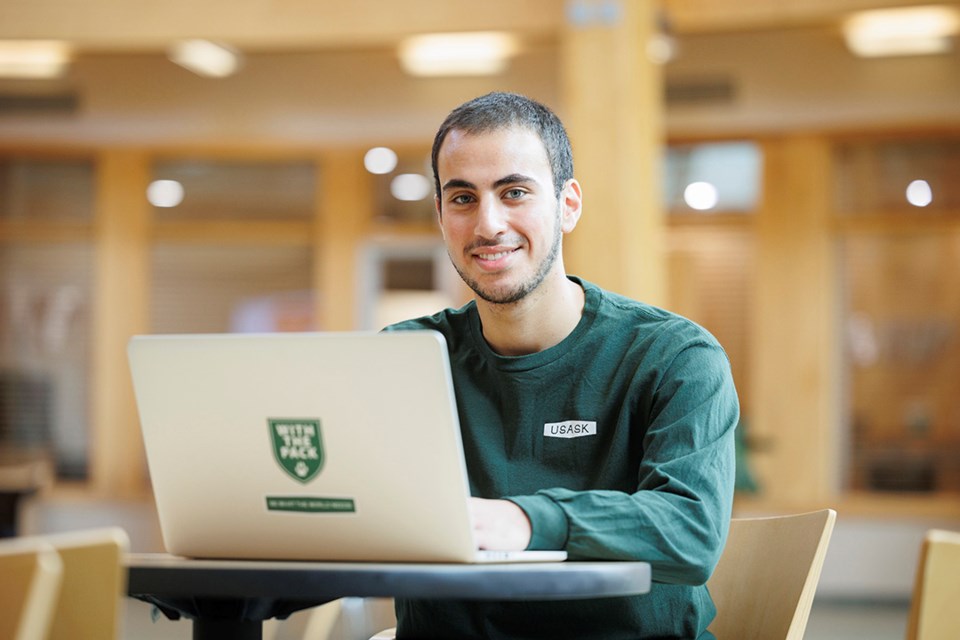SASKATOON — The Flexible Learning Initiative at the University of Saskatchewan (USask) aims to provide students with choices in how, where, and when they engage in learning, enabling more personalized pathways into and through a program.
USask student Adam Ismail recently completed his second year of biomedicine and is going into his third year of cellular, physiology and pharmacology (CPPS).
He decided to take classes at the USask Prince Albert campus to stay near his family for as long as possible.
“Some of the benefits of taking classes at a smaller campus are the small class sizes, as well as being able to get personal with your professors, which helps tremendously and cuts a bit of the awkwardness when asking questions,” Ismail noted. “The biggest advantage for me was getting to know the campus heads personally and having the peace of mind that knowing their door will always be open for me to talk to about anything, from complaining about exams, to talking about future classes, and even personal issues.”
Ismail is just one student taking advantage of flexible learning at USask. In January 2024 the Provost initiated the Flexible Learning Initiative which aims to enhance the provision of choice for students in how, where, and when they engage in learning, enabling more personalized pathways into and through a program.
The initiative is intended to build on and highlight offerings already available at USask. For example, at least 13 per cent of current USask classes are offered in a flexible mode such as online or hybrid.
USask is exploring a broad array of flexible learning options. The mode of learning includes in-person, hybrid, blended or online, asynchronous, or synchronous options. Learners can also choose varied places to study, such as the Saskatoon campus, Prince Albert campus, or a regional college.
USask is also considering varied pathways into and through academic programs as part of the initiative (e.g., micro-credentials, preparation courses) and pace of learning (e.g., through adjustment in how many courses are taken each term). Also, as part of flexible learning, educators can make choices to use flexible teaching practices (e.g., designing assessments so fewer students need accommodations, designing classroom dialogue that engages all students) that support student learning.
While Ismail prefers in-person classes, he also took an online class and recommends every student do the same.
“The advantage of taking classes online is that you get to work at your own pace and really get to understand your work ethic and understand how you learn the best,” he explained. “I do think taking at least one online class is essential for students to better understand their work ethic.”
Dr. Airini, provost and vice-president academic, said there is research and evidence to suggest students have an expectation of flexibility when it comes to their higher education.
“The University of Saskatchewan is committed to meeting the needs of our community by enabling students to learn in ways that suit their life during their journey to become graduates and leaders the world needs.”
Ismail said despite no longer studying at a smaller campus, he still regularly visits the staff.
“From campus heads to academic advisors, the bonds you form can yield many future benefits. Their influence significantly eased my transition to the Saskatoon campus, and for that, I’m immensely grateful.”
Learn more about USask’s flexible course and program offerings.
— Submitted by USask Media Relations



